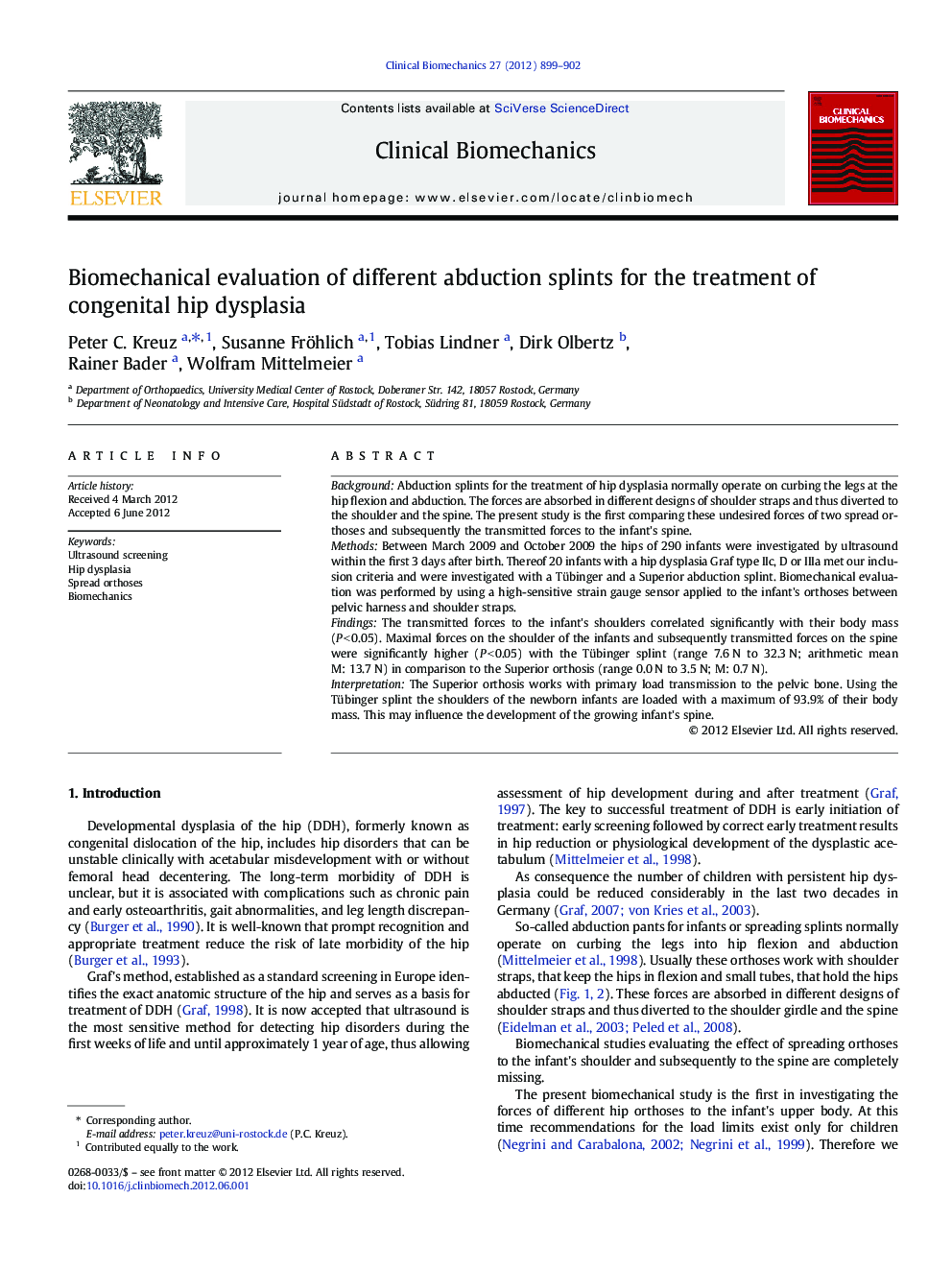| Article ID | Journal | Published Year | Pages | File Type |
|---|---|---|---|---|
| 6204980 | Clinical Biomechanics | 2012 | 4 Pages |
BackgroundAbduction splints for the treatment of hip dysplasia normally operate on curbing the legs at the hip flexion and abduction. The forces are absorbed in different designs of shoulder straps and thus diverted to the shoulder and the spine. The present study is the first comparing these undesired forces of two spread orthoses and subsequently the transmitted forces to the infant's spine.MethodsBetween March 2009 and October 2009 the hips of 290 infants were investigated by ultrasound within the first 3Â days after birth. Thereof 20 infants with a hip dysplasia Graf type IIc, D or IIIa met our inclusion criteria and were investigated with a Tübinger and a Superior abduction splint. Biomechanical evaluation was performed by using a high-sensitive strain gauge sensor applied to the infant's orthoses between pelvic harness and shoulder straps.FindingsThe transmitted forces to the infant's shoulders correlated significantly with their body mass (PÂ <Â 0.05). Maximal forces on the shoulder of the infants and subsequently transmitted forces on the spine were significantly higher (PÂ <Â 0.05) with the Tübinger splint (range 7.6Â N to 32.3Â N; arithmetic mean M: 13.7Â N) in comparison to the Superior orthosis (range 0.0Â N to 3.5Â N; M: 0.7Â N).InterpretationThe Superior orthosis works with primary load transmission to the pelvic bone. Using the Tübinger splint the shoulders of the newborn infants are loaded with a maximum of 93.9% of their body mass. This may influence the development of the growing infant's spine.
